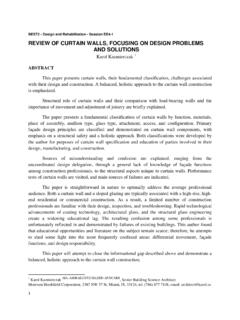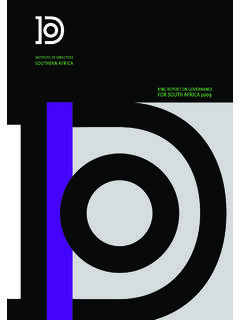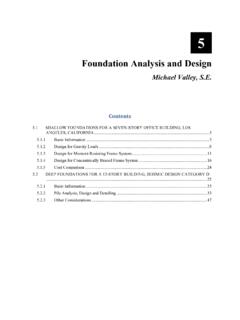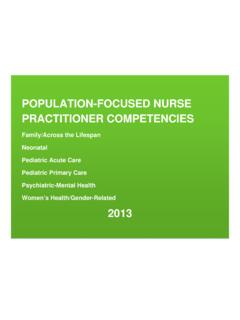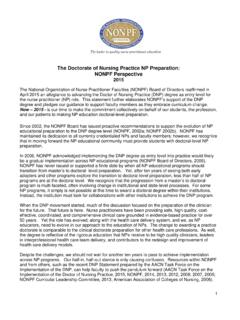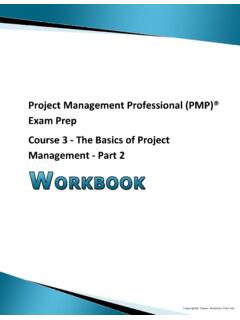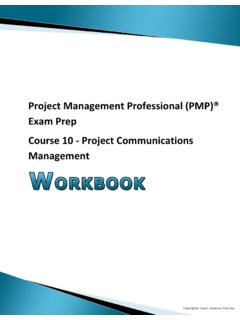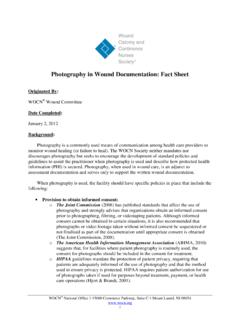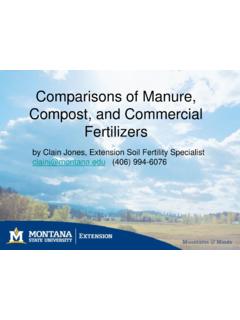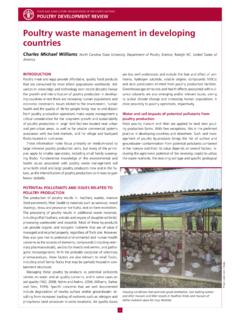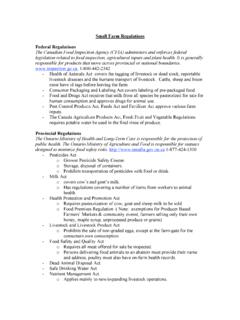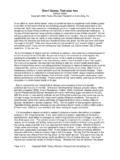Transcription of Environmental Regulations - cdn.ymaws.com
1 Environmental Regulations : A Review of Milk Producer Experiences and Perspectives in Minnesota Prepared for by Warren Formo, Minnesota Agricultural Water Resource Center July 2013 Environmental Regulations : A Review of Milk Producer Experiences & Perspectives in Minnesota Page 2 of 8 EXECUTIVE SUMMARY Ongoing Environmental concerns, particularly related to water quality, present numerous challenges for Minnesota dairy producers ranging from increasing regulation and reporting requirements to negative media attention. Regulatory developments in the past have resulted in varying levels of permit requirements and manure management changes. Current agency activities, such as the development of the Agricultural Water Quality Certification Program and new nutrient standards for surface waters, create an atmosphere of uncertainty for Minnesota dairy producers.
2 Minnesota Milk Producers Association (MMPA) commissioned this report in order to develop a greater understanding of the experiences and perspectives dairy farmers have toward Environmental Regulations in Minnesota. Farmer input was gathered through a series of focus groups held in three diverse regions across the state, coupled with telephone interviews conducted to insure broad geographic coverage. Additional interviews gathered input from consultants, who have become an integral part of regulatory interaction on many farms. This report provides a snapshot at this point in time of the Regulations shaping Minnesota dairy farms today and influencing their plans for the future. It is important and noteworthy that literally every dairy producer providing feedback expressed discontent with the current regulatory environment.
3 Every participant offered at least one comment about regulatory overreach, inconsistent application of rules or inadequately trained agency staff. It is equally important to note that most participants expressed a strong Environmental ethic, a desire to do the right things in order to preserve their farm business for future generations and to maintain goodwill in their communities. The action items that emerged from these comments can be summarized as follows: Implement a training program specifically for agency staff members with whom dairy farmers interact. Expand basic and dairy -specific agricultural educational outreach to legislators and other rule makers. Expand educational outreach to dairy farmers to raise awareness of Environmental issues.
4 Expand efforts to help dairy farmers engage in stewardship messaging. Create an emergency response tool kit for dairy farmers. It is certainly true that MMPA Directors are themselves very much aware of the issues discussed here, both from their own experience and from their interactions with other farmers. MMPA staff members also have perspectives on Environmental concerns based on their interactions with dairy farmers. Thus it is likely that most of the information gleaned from these conversations will reaffirm what was previously known, providing support for MMPA policy positions and programs that are already in place. But the candid input from this diverse group should also stimulate ideas for new steps MMPA might consider as it continues to serve the men and women who comprise Minnesota s dairy industry.
5 Environmental Regulations : A Review of Milk Producer Experiences & Perspectives in Minnesota Page 3 of 8 OVERVIEW Minnesota feedlot rules date back to 1971, when rules requiring livestock producers to control runoff from feedlots and to properly use manure as a fertilizer were first enacted. Since then, feedlot rules have gone through many revisions resulting in a labyrinth of permitting, recordkeeping and regulatory requirements. Many of the most onerous rules were put into place during an era State Senator Steve Dille dubbed the feedlot wars that began in the late 1990 s and ended in 2006. Many livestock producers would suggest that the feedlot wars are still on and that the battlefield has simply shifted. Depending on size and location of their farm operation, Minnesota dairy producers may interact with a county feedlot officer (CFO) or directly with the Minnesota Pollution Control Agency (MPCA).
6 Those who expand or modernize their facilities also become familiar with local and state requirements for building permits, and many are subject to National Pollutant Discharge Elimination System (NPDES) permits or State Disposal System (SDS) permits. Others have entered open lot agreements. Most are required to implement varying degrees of manure management planning, recordkeeping and reporting. Beyond basic feedlot and manure storage practices, rules now require such add-ons as clean water diversions, vegetative filter strip and silage leachate controls. In short, few dairy producers operate completely untouched by Environmental Regulations . Couple this with health and safety requirements and one might begin to wonder how dairy farmers find time to get chores done. Feedlot rules and manure management requirements are generally not viewed as excessively burdensome to the extent that they align with good economic and stewardship principles.
7 Other rules and requirements, particularly those involving expensive information-gathering for Environmental review, often add cost without real benefit, either to the environment or to the producer. These added costs are especially difficult for smaller operations to absorb and have the unintended consequence of shaping the dairy industry in exactly the opposite manner from that sought by activists opposed to larger dairies. Several participants in this study cited examples of small dairies that planned modest expansions in order to remain economically viable, often when bringing the next generation into the operation. Their plans were stopped by the costs associated with Environmental review. In some cases, expansion plans were scrapped and eventually the dairy exited the industry.
8 In other cases, expansion plans were increased in order to spread costs over a larger number of cows. Overall, the trend for more rules to be adopted and for rules to be applied to more producers as herd size thresholds are reduced is disconcerting to dairy producers. Many wonder, At what point will Regulations put me at a competitive disadvantage to producers in neighboring states (if they haven t already) and where will it (the development of new rules) end? Environmental Regulations : A Review of Milk Producer Experiences & Perspectives in Minnesota Page 4 of 8 METHODS Minnesota Agricultural Water Resource Center (MAWRC) provided facilitation for the focus groups and interviews conducted for this report. MAWRC brings a different experience and perspective to this project, best characterized as being generally aware of the feedlot Regulations affecting dairy farmers without having been directly involved in what one participant described as the fray.
9 MMPA staff provided a list of dairy farmers representing a wide spectrum of herd size and geographic distribution, but all of whom were of a size that would have likely necessitated some level of interaction with a regulatory or permitting agency. MMPA staff also made initial contacts to invite producers into the process. Interviews were conducted either individually or in small groups. Interviews and focus groups began with a brief overview of the process. Participants were assured that all responses would be summarized without attribution to a particular individual, affording them at least some ability to speak candidly. Participants were asked to provide input based on their experience to address the following key questions: 1. What Environmental Regulations /requirements currently affect your dairy operation?
10 2. How has your dairy operation changed in response to these Regulations /requirements? 3. What do you see in the future relative to Environmental Regulations /requirements? 4. As a dairy producer, what changes would you make to Environmental Regulations /requirements? SUMMARY OF PARTICIPANT RESPONSES PEOPLE MATTER Most concerns involved lack of experience, agricultural knowledge and continuity of County Feedlot Officers (CFOs), Minnesota Pollution Control Agency (MPCA) staff and Natural Resource Conservation Service (NRCS) staff. We have a revolving door in our County Feedlot Officer. It seems like we are constantly training someone. And if there is a change while you are in the permit process, it is basically like starting over. Several participants, even those expressing concerns about agency staff and CFOs, also stated that they have worked with some agency staff and CFOs who were very helpful.
